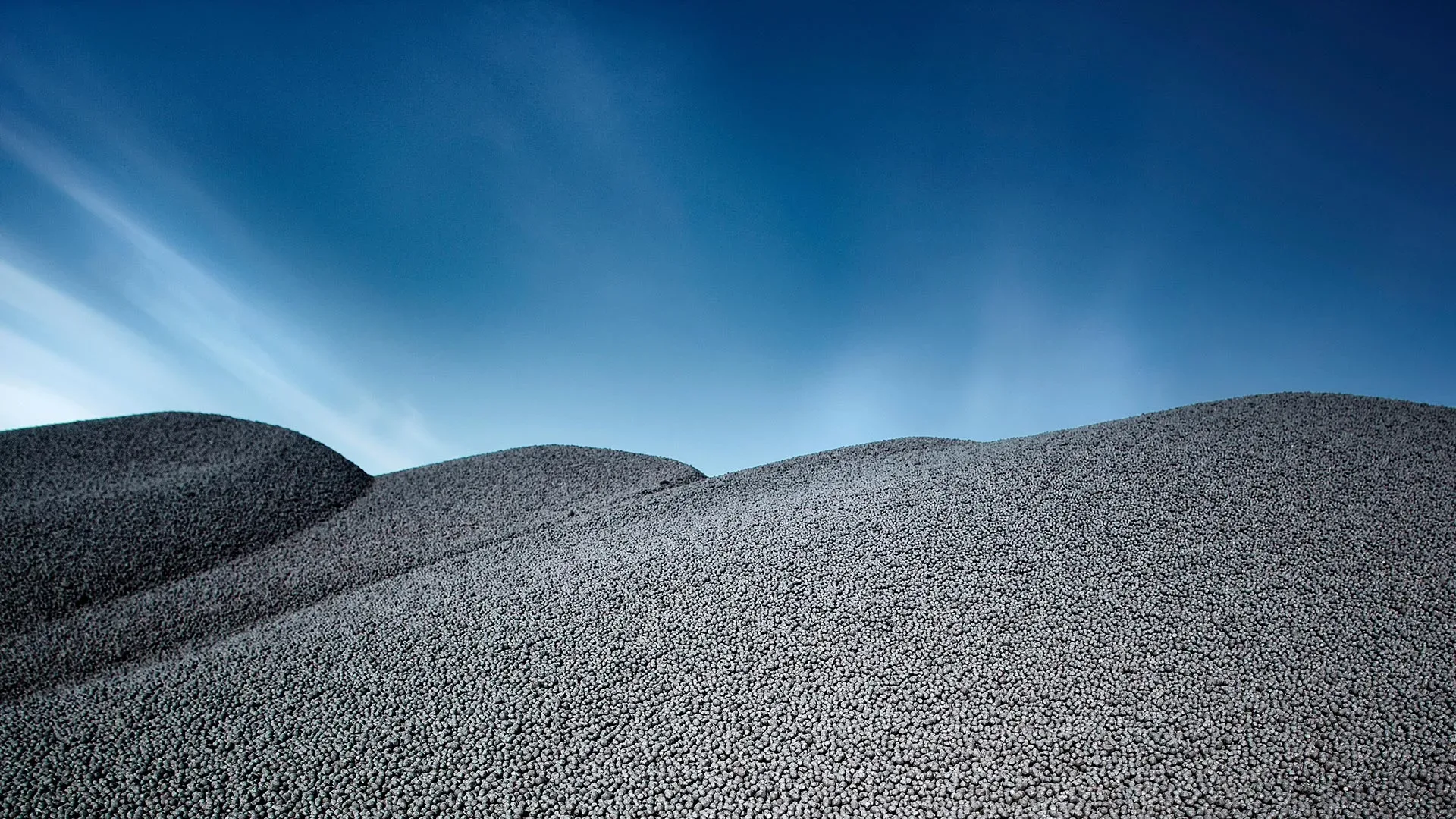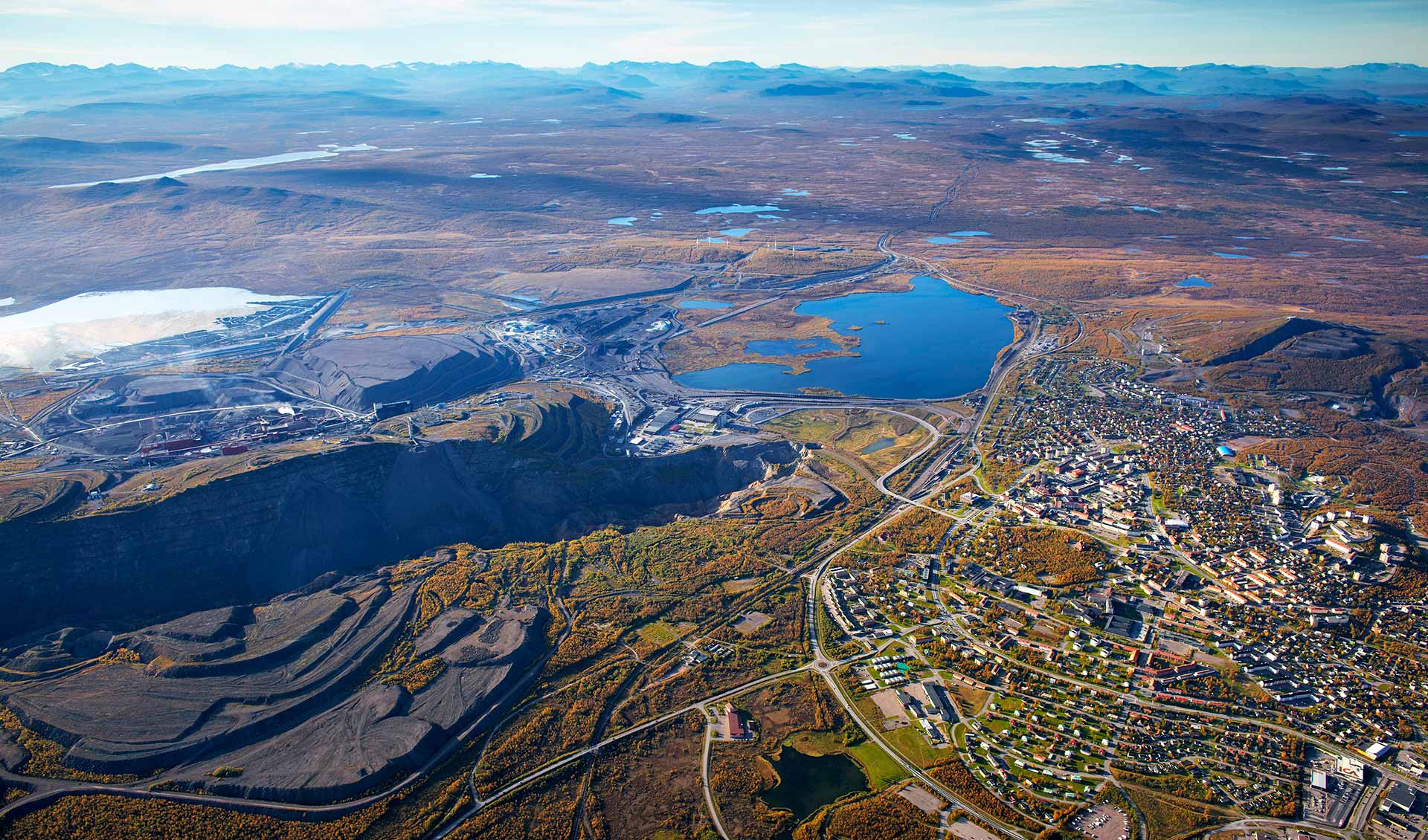From mine to port
Everything starts in the mine, with our iron ore. It is the foundation of our operations and a prerequisite for leading the transformation of our industry towards a sustainable future. This is the story about the road from mining iron ore underground to loading the ships in our harbours with highly upgraded products.

Our mines and processing plants are located in Kiruna, Malmberget and Svappavaara. The mines are the heart of our business; everything starts in the mine.
The road from mine to steel is a long journey that begins with exploration, which involves testing the bedrock for mineral deposits. If exploration is successful, mining and processing can follow. Our main products from the mines are iron ore pellets and fines, which are transported by rail to our ports in Luleå and Narvik and then shipped further out into the world.
Exploration
The foundation of our business is securing mineral resources and reserves. A deposit is classified as a mineral resource if it can be considered to be economically minable in the future. Mineral reserves are deposits that has proven to be technically and economically viable to mine. We plan our entire mining operations on these assets.
Mineral resources are what can be mined in the future, while reserves are the portion that has been shown to be extractable profitably.
Exploration drilling involves little or no intervention in the area being explored. It is carried out with mobile drilling rigs, which usually leave no significant trace behind. The visible result is a borehole about five centimetres in diameter with a plastic sleeve marking the site.
The work generates important information about the deposit, but to assess the resources and reserves we must also take into account the costs of mining and the price at which the extracted material can be sold.
Every year, we calculate and compile the mineral resources and reserves in order to assess and make decisions on the development of our business.
Mining
Our iron ore is mined both above and below ground. The vast majority of our mining takes place several hundred metres underground, in the mines in Kiirunavaara (Kiruna) and Malmberget (Gällivare), which are the world’s two largest underground iron ore mines. In Svappavaara, the ore is mined in the Leveäniemi surface mine.

In Kiruna, the iron ore we mine every day would be enough to build the equivalent of 6.5 Eiffel Towers, while in Gällivare and Svappavaara we could deliver raw materials for building 4.5 and 2 copies of the same tower respectively.
Mining is a complex process that places great demands on safety, which is our top priority at LKAB. We see safe, secure and pleasant workplaces as a prerequisite for efficient mining production.
How our underground mining works
In LKAB’s underground mines, the ore is extracted by sub-level caving. This is an efficient mining method for steep ore bodies and allows maximum extraction from the ore body with a high degree of safety.
- Drifting : Construction of transport tunnels, or drifts, into the ore body.
- Production drilling : Using a remote controlled drilling rig, long holes are drilled upwards through the ore body in a fan-shaped pattern, known as a fan cut.
- Blasting : A creamy-textured explosive is pumped into the holes. Blasting is done every night.
- Production loading : The resulting ore is removed by large haulers, dumped into vertical chutes and collected in rock cavities.
- Chute loading and transporting : From the rock cavities, the ore is transported to large crushers using trains or trucks, depending on which mine.
- Emptying and crushing : The trains and trucks are emptied into rock bins for onward delivery to the crushers. The ore is crushed into pieces measuring about ten centimetres.
- Hoisting : The ore is then transported to the surface by ore elevators, called skip hoists. Each skip can carry 40 tonnes of ore at a speed of 60 kilometres per hour, or 17 metres per second.
Processing
The crushed iron ore is then processed above ground to either fines or iron ore pellets.
It is a complex process that takes place in several stages:
- Sorting : The ore is roughly sorted and residual waste rock removed. After that, the iore ore is crushed into smaller fractions. This increases the iron concentration from approximately 45 to more than 60 percent.
- Concentration : The ore is then finely ground and further purified, to remove silicon, sodium, potassium, phosphorus, apatite etc. Additives like olivine, quartzite, limestone and dolomite are then mixed into the resulting slurry (a mix of ground iron ore and water).
- Pelletisation : In large rotating drums, the slurry are rolled into small balls called pellets. The iron ore pellets are then dried and preheated before finally being heated at 1,250°C to a point where the iron ore particles partially fuse together. Before delivery, the pellets are cooled down.
The ore used to produce fines is separated from the crude ore directly after sorting, processed by screening to a size of less than two millimetres, and upgraded by magnetic separation.

Transporting
The iron ore’s journey out into the world goes along the Iron Ore Line and Ofotbanen to the ports of Luleå and Narvik (Norway). The ore transports are carried out on a total of 500 kilometres of railway line operated by the world’s strongest electric locomotive – the IORE locomotive. Every day, four trains leave for the port in Luleå – the southern loop – and ten trains go to Narvik – the northern loop.
With its impressive tractive effort of 1,200 kilonewtons, 17 IORE locomotives operate on the route. These are 750-metre-long trainsets consisting of 68 ore wagons. Each journey carries 6,800 tonnes of iron ore products. On the return journey, additives are transported to the processing plant. This makes LKAB’s transport both large-scale and efficient.
The ports are the backbone of our logistics system and the link between the mine and our customers. Every year, several million tonnes of iron ore products are shipped out through the ports. Narvik, which has a capacity of around 30 million tonnes per year, accounts for two-thirds of those exports.
Common questions on iron ore
- An iron ore pellet is a small ball consisting of a mix of upgraded iron ore, oxides and additives. At LKAB, we produce Blast Furnace Pellets (BF) and Direct Reduction Pellets (DR), with an iron concentration of between 66.7 and 67.8 percent.
- Fines is the product name for fine iron ore grains (size 0-6 mm) for use in sintering processes (see below). 20 percent of the iron ore LKAB produces are magnetite fines (MAF), which contain more than 70 percent iron. It is a highly effective alternative to for instance hematite fines.
- Sponge iron is a nick-name for Direct-Reduced Iron (DRI). After the oxygen is removed from the originating iron ore, it leaves pores that makes the product resemble sponge. At LKAB, we are in the process of altering our entire core process to delivering carbon-free sponge iron.
- An iron ore sinter is a type of agglomorate iron ore, just like pellets. Sinter is a piece of iron ore that has an irregular shape, and is both larger and less efficient in iron making than a pellet.
- Sintering is the process of agglomerating (fusing) elements into a solid mass by combining pressure with heat, without melting the raw material used. In iron and steel making, the sintering process creates a raw material (like an iron ore pellet) that is relatively effective to produce iron from in blast furnaces.
- Bentonite is a powdery clay mineral. At LKAB, we use it as a binding agent in our iron ore pellets.
- Grate-Kiln is a type of pelletising plant. The first Grate-Kiln was built in the USA by Allis-Chalmers (since acquired by Metso) in 1960. LKAB’s first Grate-Kiln was built in 1969 and we currently have four mills running on the technology, both in Kiruna (three at Kiirunavaara and one at Svappavaara).
- Straight-grate (or traveling grate) is another type of pelletising plant. The traveling grate was first developed in the 19th century, but it is unclear when it came to use in the iron industry. Our first straight-grate was built in 1971 and we currently have two running, both in Gällivare (Malmberget).




